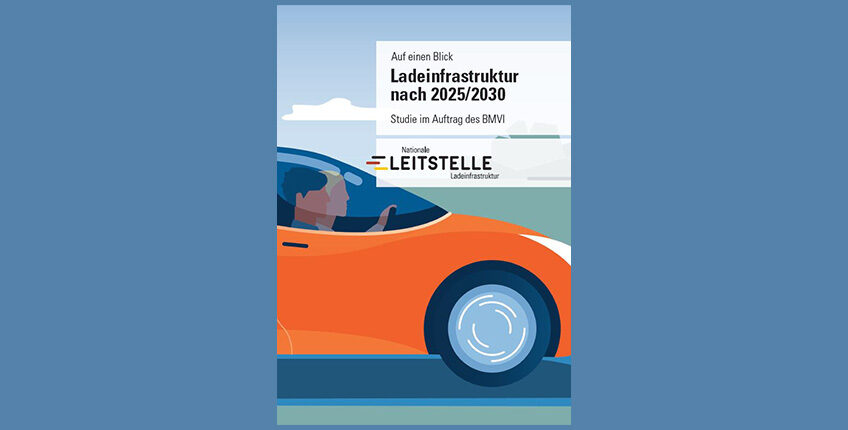The electrification of road transport is indispensable to protecting the climate, and a demand-oriented charging infrastructure must be in place to facilitate this. But how great will the demand be over the coming years? The new study: ‘Charging infrastructure after 2025/2030 – Scenarios for market ramp-up’ by the National Centre for Charging Infrastructure provides us with this information. It was commissioned by the Federal Ministry of Transport and Digital Infrastructure (BMVI) and carried out by the Reiner Lemoine Institute.
Using scientific methodology, the study calculates for the first time how much and above all, what kind of charging infrastructure must be constructed by 2030 in order to meet demand. It is based on confidential information from the major car manufacturers active in Germany about their planned vehicle launches. The study takes into account new technological developments such as high power charging (HPC) and places user needs at the forefront.
Key results:
- The stock of e-vehicles may increase much more dramatically by the year 2025/2030 than currently assumed. This is demonstrated by confidential data from the car manufacturers surveyed. Up to 14.8 million battery-electric e-vehicles and plug-in hybrids could be registered in Germany by 2030.
- The demand for publicly accessible charging infrastructure in 2030 is estimated to lie between 440,000 and 843,000 charging points. This number is dependent on how much private charging infrastructure is available and how busy the publicly accessible charging infrastructure is, but also on user charging behaviour: if more charging hubs with fast charging points are used in future, demand will be significantly lower.
- The calculations also show that the rigid 10:1 ratio of e-vehicles to publicly accessible charging infrastructure no longer applies. The study calculates an 11:1 ratio of e-vehicles to publicly accessible charging infrastructure in 2021, rising to 20:1 by 2030. The reason for this is the better availability of private charging infrastructure and the increasing charging capacity of e-vehicles. The ratio for 2030 also varies depending on the type of environment. The study team ascertained a 14:1 ratio in urban areas and 23:1 for suburban and rural areas.
- According to calculations, there will be a charging point available at around 61 per cent of private residential parking spaces by 2030. Publicly accessible charging points are urgently required to bridge this gap.
- Whether it is at work, while shopping or taking a recreational trip, every single charging situation is important. However, the street environment will play the most important role. A demand of 420,000 charging points was calculated for locations where cars are most frequently parked: at the side of the road or in public carparks.
- The share of private charging is predicted to increase to 76-88 per cent by 2030, leaving the share of public charging at 12-24 per cent.
Methodology and data basis
For a valid prognosis on the e-mobility of the future, detailed information on current user behaviour and the stock of e-vehicles up to 2030 is needed. The study team from the Reiner Lemoine Institute conducted intensive stakeholder dialogue with the relevant actors and confidential discussions with the car manufacturers active in Germany. Based on this data the researchers determined the mobility and charging behaviour of households and thus deduced charging infrastructure demand. Data on the mobility behaviour of certain types of households from the study: ‘Mobility in Germany’ was also included in the calculations. Commissioned by the BMVI, ‘Mobility in Germany’ is a nationwide survey of households on their everyday transport behaviour.
Outlook
The rapid establishment of a nationwide and user-friendly charging infrastructure is a major goal of the federal government’s Climate Action Programme 2030. To implement this, a year ago on 18 November 2019, the Charging Infrastructure Master Plan was adopted.
The results and the methodology of the new study offer a solid basis for the revision of the Master Plan and for providing scientific support to the targeted development of charging infrastructure.
“In future there should be a regular exchange with actors to scientifically support the development of charging infrastructure in Germany. In this way the interests of the actors can merge and the charging needs of users better estimated. The methodology of this study provides a suitable foundation for this”, says Johannes Pallasch, spokesperson and one of the two heads of the National Centre for Charging Infrastructure. “Only when the development of charging infrastructure is seen as a common challenge, and when technological variety can be seen as a solution and a strength, can this development be successful.”
The study can be downloaded here.
The factsheet with the most important content at a glance can be found here.


